Wendell Rodricks was a master showman, who did not hesitate to experiment, to push the boundaries of fashion and art to create unforgettable moments
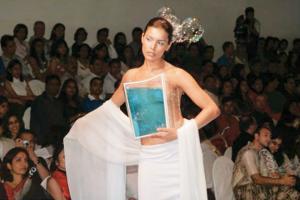
 Wendell Rodricks spent more than three decades at the top of fashion, but what made him a darling of the people he knew was his knack for speaking his mind, freely, and quotable lines, such as this one: Fashion is meant to excite, titillate and… seduce. Rodricks leaves behind a legacy of a master showman, who pushed the boundaries of fashion and art to create cinematic moments on the ramp. For a show in 2003, model Dipti Gujral wore an aquarium corset with a saree gown. The image went viral before viral was even a thing.
Wendell Rodricks spent more than three decades at the top of fashion, but what made him a darling of the people he knew was his knack for speaking his mind, freely, and quotable lines, such as this one: Fashion is meant to excite, titillate and… seduce. Rodricks leaves behind a legacy of a master showman, who pushed the boundaries of fashion and art to create cinematic moments on the ramp. For a show in 2003, model Dipti Gujral wore an aquarium corset with a saree gown. The image went viral before viral was even a thing.
Meeting Jerome
In his autobiography, The Green Room, Rodricks repeatedly credits Jerome Marrel for inspiring him to chase his dream of becoming a designer. The two first met in the early eighties when he was working in Oman in the catering business. "Hello, you must be Wendell, I am Jerome Marrel", was the introduction that would lead to a relationship that lasted longer than many straight marriages. They formalised their relationship in 2002 by signing the pacte civil de solidarité (PACS), the French civil solidarity pact that offers legal status to same-sex couples, and lived in their Goa home for 25 years.
Mumbai's loss, Goa's gain
Rodricks's shift to Goa made for quite a story, and every time the designer recalled it, his eyes would well up with both joy and sorrow. The joy of calling Casa Dona Maria his address, and the heartbreak of the 1993 riots that ravaged his city, Mumbai. While consoling his tailor Tawqir who wanted to leave the city after the communal clashes, Rodricks asked him to stay, and offered him a home in Goa. Soon after, Rodricks himself moved with his parents to Colvale, a quiet village in Goa, and Tawqir installed his sewing machine on the upper floor.
Making fabric from food
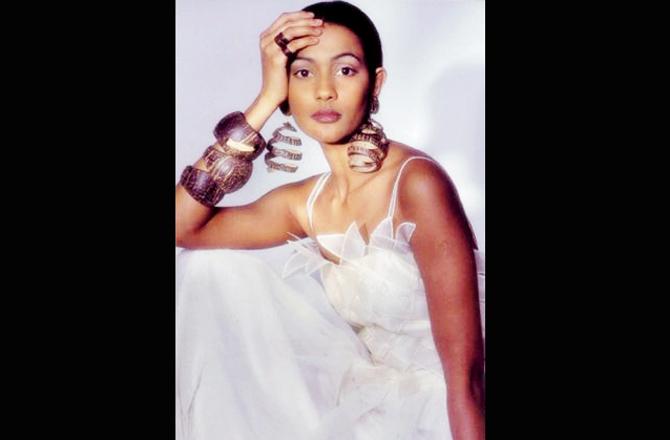
Marielou Phillips in the Prodigale collection (in 1993) made in Goa, which started the eco-friendly trend. Coconut shell accessories by Franco from Camurlim. Pic/Rafique Sayed
The first collection he showcased in 1993 after relocating to Goa was also India's first truly sustainable collection. Pineapple leaves and banana stalks were boiled to distil their fibres. Rodricks writes in The Green Room, "Woven with wild cotton and silk, the result was a new, natural statement in fabric. We experimented with wheat and cotton as well."
First designer to be invited to IGEDO

Helena Christensen shot by Mario Testino for IGEDO. Pic/The Green Room
His show at IGEDO in 1995, the largest garment fair in the world, was called Clothing the Soul. Audiences expected the clichéd riot of Indian colours, glorified elephant and peacock motifs, but Rodricks surprised them with the yogic calm of South India realised through laidback Goa silhouettes — crinkled organza silk blouses, satin sarongs, breezy tunics in white, jackets and cotton kurtas. "When I saw the photograph of Helena Christensen shot by Mario Testino for IGEDO, it was my first taste of international success," Rodricks recounts in The Green Room.
Padma Shri for a Braille collection
Rodricks introduced Visionnaire, his "most responsible collection ever" in 2001 at Ensemble, the multi-designer store at Lion Gate. Senior journalist Meher Castelino set the process in motion by asking the designer to meet a professor at Worli's National Association of the Blind. After months of research, Rodricks came up with the idea of placing Braille on clothing in fine French knots and tiny pearls, to convey the colour of each garment to the visually impaired. Rodricks was honoured with the Padma Shri in 2014, for Visionnaire.
Clothes inspired by a disaster
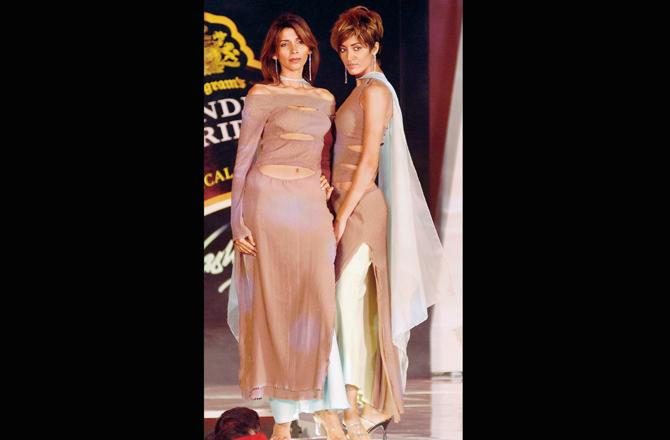
The Ripple collection in 2005. Pic/Getty Images
He had initially conceived the Ripple collection (2005) in bright colours but in the aftermath of the tsunami that hit Indonesia, Sri Lanka and India, the designer opted for muddy browns. But the press was not forgiving, christening it the Tsunami collection. Rodricks went on to create bestseller collections after the incident but continued to refer to Ripple as a good collection.
Innovating with the saree
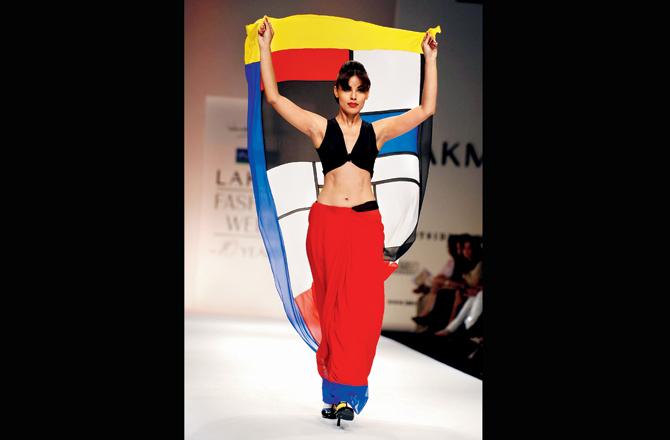
The Mondrian Minimalist saree. Pic/Getty Images
Rodricks was fascinated by the saree drape, and throughout his career, he made bold runway statements with light-as-air resort versions including those worn with bikini tops, and the saree gown. And often his free-spirited designs met with disapproval by purists who called it the "bastardisation of a saree". In no mood to relent, he set off more fireworks when he once remarked, "the Indian sari is derived from Athenian dress." As a tribute to Dutch artist Piet Mondrian and designer Yves Saint Laurent, he reimagined the saree in his Mondrian Minimalist collection in 2009 as square blocks. He introduced monochrome jersey sarees for the on-the-go urban woman, with built-in cholis and pallu split in one section to gather as a halter neck while the other half looped into a kimono sleeve pallu.
Handlooms in ready-to-wear
This show at Lakmé Fashion Week in 2016 took the idea of experiential to an extreme by switching the runway format to a live installation of India's crafts and textiles. Rodricks presented his models on podiums dressed in the legacy textiles of khadi cotton, mugha, silk tussar and organza in silhouettes that reconciled the handmade with avant-garde ready-to-wear. To wit: the lehengas were styled as capes, dhotis transformed into sarees and capes into kurtas. It also reiterated Rodricks' belief that anything that has multiple uses is inherently sustainable.
Giving respect to the Kunbi

Rodricks presented the Kunbi Tribe collection in 2010. Pic/Getty Images
Sonia and Priyanka Gandhi own the Kunbi saree as does the First Lady Savita Kovind and former President of India Pratibha Patil. Rodricks used his authority as a Goan and put the Kunbi saree — the attire of the indigenous kolis — on India's clothing and textiles archive. Traditionally, the Kunbi was a woven, cotton chequered saree in red and white. On his part, Rodricks tweaked its character, using eco-friendly dyes and revised patterns. His presentation of the Kunbi Tribe collection at the Wills Lifestyle India Fashion Week in 2010 received a standing ovation.
Schulen Fernandes takes over
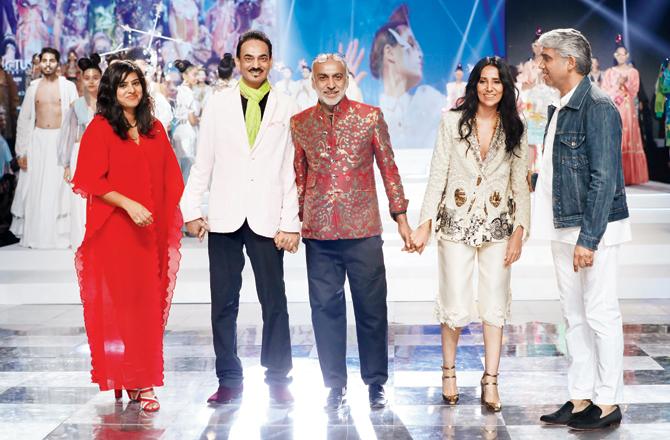
Schulen Fernandes, Wendell Rodricks, Manish Arora, Anamika Khanna and Rajesh Pratap Singh take a bow after the finale show in 2012. Pic/Getty Images
Rodricks was nothing like the trite controlling designer. In October 2016, he handed over his brand to his protégé Schulen Fernandes so that he could concentrate on his research projects, including the The Moda Goa Museum. However, he continued to oversee all collections.
The Moda Goa Museum
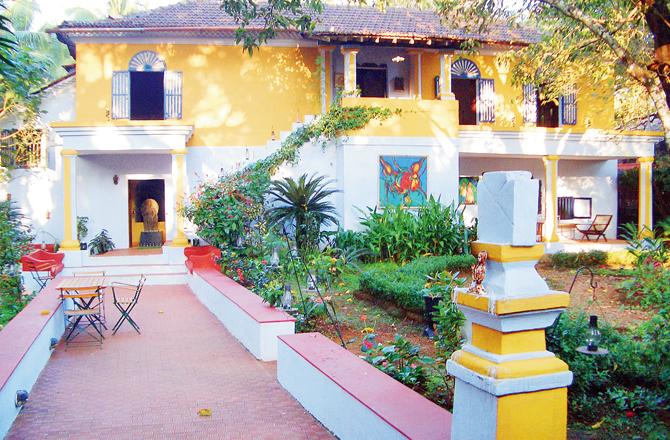
Wendell Rodricks Colvale House turns into a museum on October 19
A vision, a dream, a passion project. Rodricks's adjectives to describe his life-long ambition — The Moda Goa Museum — were all born from love. On October 19 (the date when Jerome and Wendell met 37 years ago), Casa Dona Maria will take on a new identity, and become home to Goa's oldest clothing, artefacts and accessories traditions. It will also house a library of books on the history of costumes and fashion, mostly from his personal collection.
The idea of the museum space, he had said, was to present an intimate experience, like in a home rather than make it a detached display space. Instead of offering an audio tour or labelling the artefacts in the collection, which Rodricks found impersonal, he decided to appoint onsite curators to take guests on a tour, and encourage discussion. His most personal touch — the Goan fish curry-rice, a special of his mother Greta, served at the cafeteria alongside feni and port wine.
Catch up on all the latest Crime, National, International and Hatke news here. Also download the new mid-day Android and iOS apps to get latest updates
 Subscribe today by clicking the link and stay updated with the latest news!" Click here!
Subscribe today by clicking the link and stay updated with the latest news!" Click here!









